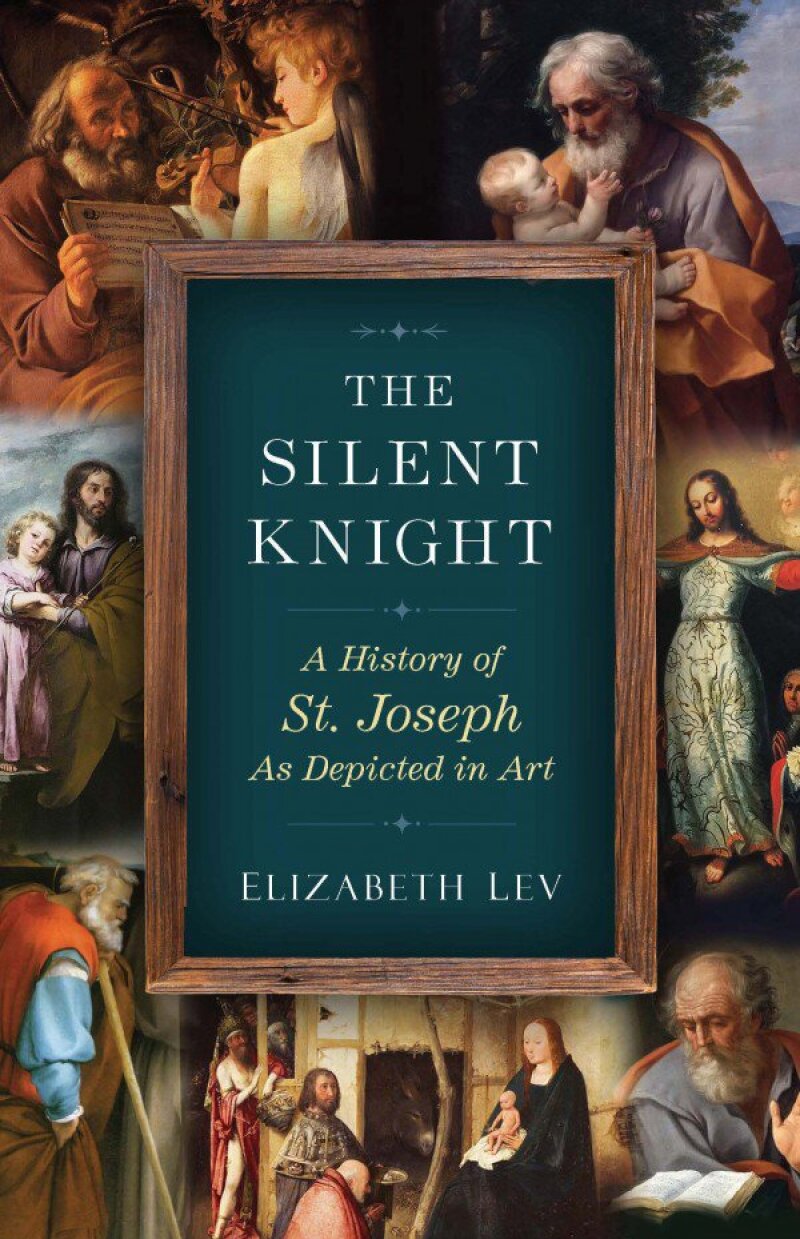
BOOK TELLS HOW ARTISTS TURNED ST. JOSEPH INTO COMPLEX HISTORICAL FIGURE
Agostino Bono/Catholic News Service
05/23/2022
St. Joseph, No. 3 in the Holy Family, is overshadowed in the Gospels by the baby Jesus and Mary. He leads Mary to Bethlehem, is present at the birth of Jesus and has a protector role in leading Mary and Jesus to exile in Egypt to escape Herod's wrath. But he says nothing in the Gospels and has no role in Christ's public ministry. At best, he's a supporting player.

St. Joseph as Depicted in Art, by Elizabeth Lev.
CNS photo/courtesy Sophia Institute Press
Not so in the more than 2,000 years of Christianity, where he has taken on a complex personality outstripping his Gospel portrait. Christian art, theology and popular preaching have shaped him into various roles, often in keeping with the Christian needs of the times.
The Silent Knight: A History of St. Joseph as Depicted in Art, by Elizabeth Lev, Sophia Institute Press. (Manchester, New Hampshire, 2021), tells how Christian art depicts him through the ages. Author Elizabeth Lev is an American art historian living in Rome where she conducts art tours.
The best parts of the book are the reproductions of famous art works and Lev's explanations of how they convey views about Joseph. A pointed finger or an eye glance casts the viewer toward an important element. Similarly colored clothing ties Joseph to other church figures, such as St. Peter to emphasize Joseph's role as protector of the papacy.
So how has Joseph been portrayed?
Sometimes he is seen as a servant to his family, washing Jesus' diapers or cooking the family meal, huffing on flames to keep the fire alive. At other times he's portrayed as the loving father, feeding berries to his hungry son.
Renaissance artist Michelangelo had Mary — her back toward Joseph —sitting down, nestled between his legs as he hands her the baby Jesus over her shoulder in a show of family harmony. To combat communist inroads with laborers in the late 1800s, he became Joseph the Worker. Spanish painter Francisco de Zurbarán even implied that he had been bodily assumed into heaven, following the ideas of some Catholic thinkers.
The book title refers to the depiction of Joseph as a knight who during the Middle Ages -- when the papacy was wracked with scandals — came to defend the church — his damsel in distress — as he had defended Mary and Jesus. Obviously, the title is also a play on words. When pronounced it recalls the title of a famous Christmas carol about the nativity.
Probably the most interesting depictions regard his age, related to why he had no marital relations with Mary. During some eras, he's portrayed as an old man and others as young and virile with curly hair. During times when priests often went sexually astray, he was a sign of chastity. The young Joseph was reminder that he had no marital relations with Mary because he was chaste, not because he was too old.
So, in the Gospels, Joseph is the strong, silent type while in Christian art and history he becomes the man for all seasons.
Also of interest: Every Day With St. Joseph, edited by Mary Amore. Our Sunday Visitor (Huntington, Indiana, 2021). 416 pp., $19.95.
Befriending St. Joseph: Finding Faith, Hope and Courage in the Seven Sorrows Devotion, by Deacon Greg Kandra. Ave Maria Press (Notre Dame, Indiana, 2022). 128 pp., $13.95.
-
